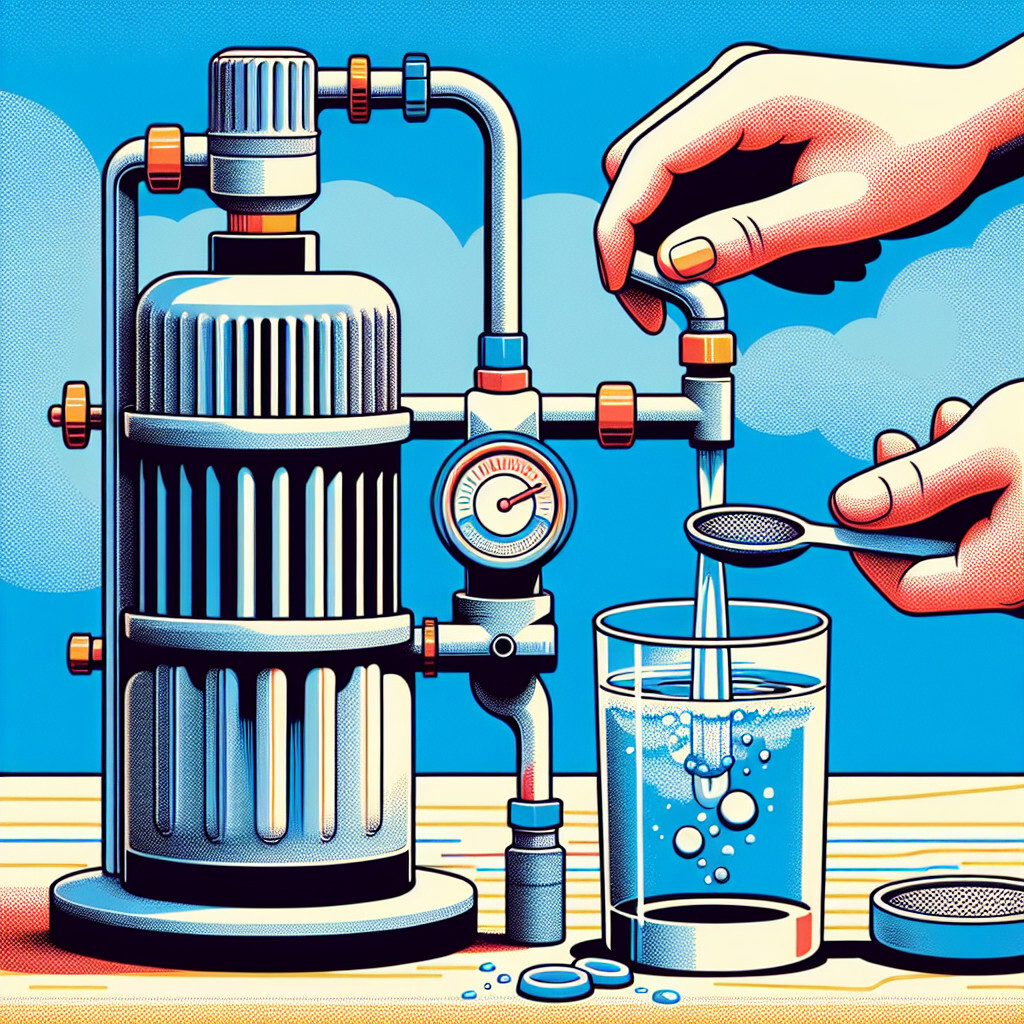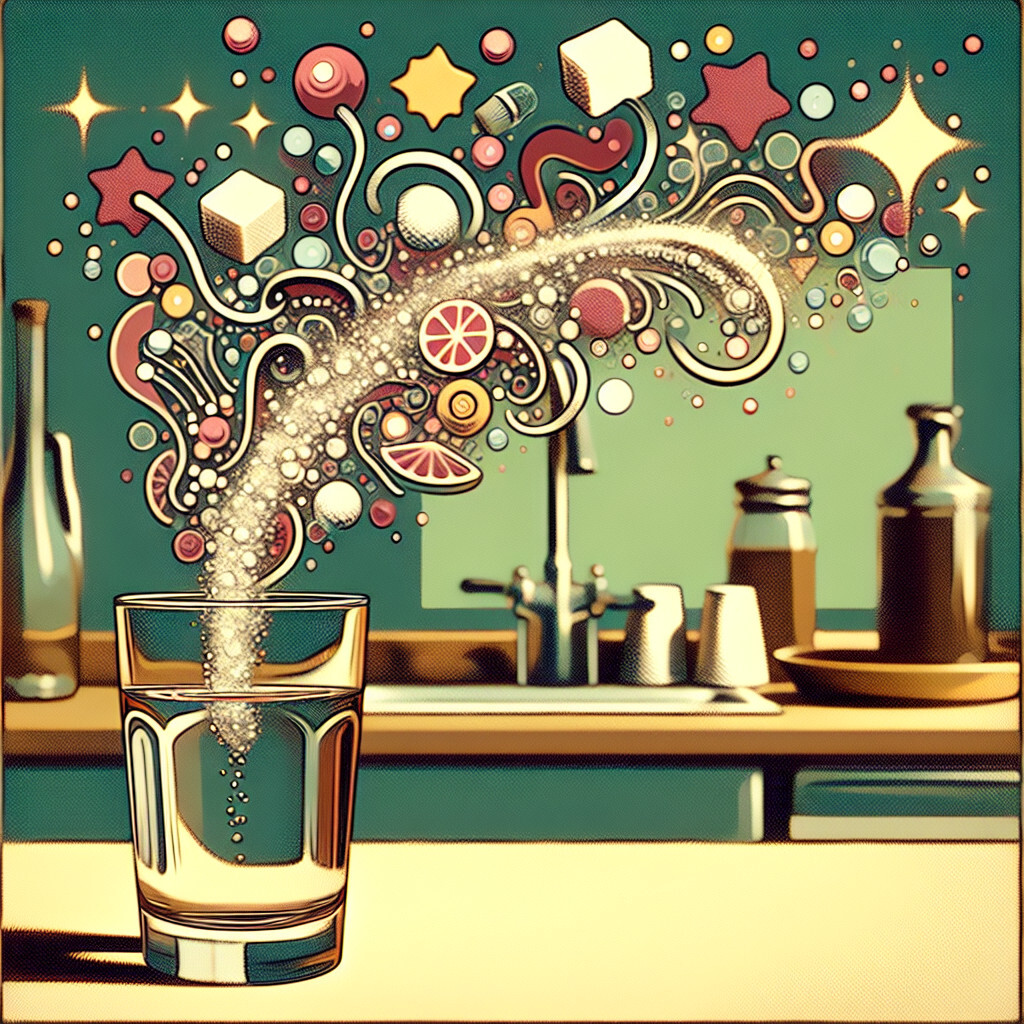-
Table of Contents
“Pure Refreshment, Straight from Your Tap!”
Introduction

Filtering your own tap water is a process that involves removing impurities and contaminants from your water supply to improve its taste, smell, and overall safety. This can be achieved through various methods such as using activated carbon filters, reverse osmosis systems, distillation units, or ultraviolet disinfection. The choice of method depends on the quality of your tap water and the specific contaminants you want to remove. This guide will provide you with a comprehensive understanding of how to filter your own tap water, ensuring you have access to clean and safe drinking water at all times.
Understanding the Basics of DIY Tap Water Filtration
Understanding the basics of DIY tap water filtration is an essential skill for anyone seeking to ensure the purity and safety of their drinking water. This process involves removing impurities and contaminants from tap water, making it safer for consumption and use. With the right knowledge and tools, you can easily filter your own tap water at home.
The first step in DIY tap water filtration is understanding what contaminants may be present in your water. Common contaminants include bacteria, viruses, heavy metals, and chemicals such as chlorine and fluoride. These can come from various sources, including old pipes, industrial waste, and natural sources like soil and rock. To determine what contaminants are in your water, you can use a home water testing kit or have your water professionally tested.
Once you know what contaminants are present, you can choose a filtration method that best suits your needs. There are several types of water filters available, each designed to remove specific types of contaminants. Activated carbon filters, for example, are effective at removing organic compounds, chlorine, and some heavy metals. Ceramic filters, on the other hand, can remove bacteria and viruses. Reverse osmosis systems are more complex and can remove a wide range of contaminants, including heavy metals, chemicals, and microorganisms.
After choosing a suitable filter, the next step is installation. Most water filters can be easily installed at the point of use, such as on a kitchen faucet or under the sink. It’s important to follow the manufacturer’s instructions carefully to ensure the filter is installed correctly. Once installed, the filter will need to be replaced periodically to maintain its effectiveness. The frequency of replacement will depend on the type of filter and the quality of your water.
In addition to filtering, you may also want to consider disinfecting your water. While many filters can remove bacteria and viruses, they may not be 100% effective. Disinfection methods such as boiling, ultraviolet light, or chemical disinfectants can provide an extra layer of protection against microorganisms.
While DIY tap water filtration can significantly improve the quality of your water, it’s important to remember that it may not remove all contaminants. Some contaminants, such as certain types of chemicals and heavy metals, may require more advanced treatment methods. If your water contains these types of contaminants, you may want to consider a professional water treatment system.
In conclusion, DIY tap water filtration is a practical and effective way to improve the quality of your drinking water. By understanding the potential contaminants in your water, choosing the right filter, and following proper installation and maintenance procedures, you can ensure that your tap water is safe and clean. However, it’s important to remember that filtration is just one part of a comprehensive water treatment strategy. Regular testing and professional treatment may also be necessary to ensure the safety of your water.
Step-by-Step Guide to Building Your Own Water Filter
The quality of tap water can vary greatly depending on your location. While many developed countries have stringent regulations ensuring the safety of tap water, it’s not uncommon for people to be concerned about potential contaminants. If you’re one of those individuals who prefer to take matters into their own hands, you might consider building your own water filter. This step-by-step guide will walk you through the process.
To begin with, it’s important to understand the basic principle behind water filtration. Essentially, it involves passing water through a medium that traps contaminants, allowing clean water to flow through. The most common types of filters use activated carbon, ceramic, and reverse osmosis. For our DIY project, we’ll be using activated carbon due to its effectiveness and accessibility.
The first step in building your own water filter is gathering the necessary materials. You’ll need a plastic bottle or a similar container, activated carbon, sand, gravel, a small piece of cloth or coffee filter, and a rubber band or string. Activated carbon can be purchased from pet stores or online, as it’s commonly used in fish tanks.
Once you have your materials, cut the bottom off your plastic bottle. This will serve as the top of your filter. Next, place the piece of cloth or coffee filter over the mouth of the bottle and secure it with the rubber band or string. This will prevent the other materials from falling out, while still allowing water to pass through.
The next step involves layering your materials inside the bottle. Start with a layer of activated carbon, followed by a layer of sand, and then a layer of gravel. Each layer should be about two inches thick. The activated carbon will trap organic compounds and chlorine, the sand will filter out larger particles, and the gravel will remove any remaining sediment.
After you’ve layered your materials, your filter is ready to use. Simply pour tap water into the top of the filter and let it drip into a clean container below. The water that comes out of the filter should be clear and free of any unpleasant tastes or odors.
However, it’s important to note that while this DIY filter can improve the taste and clarity of your water, it may not remove all potential contaminants. For instance, it won’t be effective against bacteria, viruses, or certain chemicals. Therefore, if you suspect that your tap water may be contaminated with these types of substances, it’s advisable to have it tested by a professional or use a commercially available water filter that’s certified to remove such contaminants.
In conclusion, building your own water filter can be a rewarding project that allows you to take control of your water quality. It’s a simple and cost-effective way to improve the taste and clarity of your tap water. However, it’s important to remember that it’s not a substitute for professional water testing or a certified water filter if you’re concerned about more serious contaminants. By understanding the limitations and proper usage of your DIY water filter, you can ensure that you’re doing the best you can to provide clean, safe water for yourself and your family.
Exploring the Benefits of Filtering Your Own Tap Water
The quality of tap water can vary greatly depending on your geographical location. While some areas may have access to pristine, crystal clear water, others may not be so fortunate. In many cases, tap water may contain impurities such as chlorine, lead, and other harmful substances that can pose a risk to your health. This is where the importance of filtering your own tap water comes into play.
Filtering your own tap water is a simple and cost-effective way to ensure that the water you consume is free from harmful contaminants. It is a process that involves passing water through a device that removes impurities. This can be achieved through various methods such as activated carbon, reverse osmosis, or distillation.
One of the primary benefits of filtering your own tap water is the improvement in taste and odor. Unfiltered tap water often has an unpleasant taste due to the presence of chlorine and other chemicals used in water treatment processes. By filtering your water, you can eliminate these substances, resulting in water that tastes clean and fresh.
In addition to improving taste and odor, filtering your own tap water can also have significant health benefits. Many tap water sources contain traces of harmful substances such as lead, mercury, and pesticides. Long-term consumption of these contaminants can lead to serious health issues including neurological problems, reproductive issues, and even certain types of cancer. By filtering your tap water, you can significantly reduce your exposure to these harmful substances.
Moreover, filtering your own tap water is an environmentally friendly choice. Bottled water, while convenient, generates a significant amount of plastic waste that contributes to environmental pollution. By choosing to filter your own tap water, you can drastically reduce your plastic consumption and contribute to a healthier planet.
Financially, filtering your own tap water can also be a wise decision. While the initial cost of a water filter may seem high, it can actually save you money in the long run. The cost of regularly buying bottled water can quickly add up, especially for larger households. In contrast, the cost of replacing a water filter is relatively low and only needs to be done every few months, depending on the type of filter and the quality of your tap water.
In conclusion, filtering your own tap water is a practice that offers numerous benefits. It can improve the taste and odor of your water, protect your health by removing harmful contaminants, reduce your environmental impact, and save you money. While the process may seem daunting at first, it is actually quite simple and can be easily incorporated into your daily routine. With a wide range of water filters available on the market, you can easily find one that suits your needs and budget. By making the switch to filtered tap water, you can enjoy clean, fresh-tasting water while also doing your part to protect your health and the environment.
Choosing the Right Materials for Your Homemade Water Filter
Water is a fundamental necessity for life, and having access to clean, safe drinking water is a basic human right. However, the quality of tap water can vary greatly depending on your location. In some areas, tap water may contain harmful contaminants such as heavy metals, bacteria, and other pollutants. Therefore, it is essential to know how to filter your own tap water to ensure its safety and improve its taste. This article will guide you through the process of choosing the right materials for your homemade water filter.
The first step in creating a homemade water filter is to select the appropriate filtration materials. These materials will serve as the primary components of your filter, and their selection should be based on their ability to effectively remove contaminants from your tap water. There are several types of materials that can be used for this purpose, including activated charcoal, sand, and gravel.
Activated charcoal, also known as activated carbon, is a highly porous substance that can absorb a wide range of contaminants, including chlorine, volatile organic compounds (VOCs), and certain types of bacteria. It is often used in commercial water filters due to its high absorption capacity and effectiveness in improving the taste and odor of tap water. When choosing activated charcoal for your homemade water filter, it is important to select a product that is food-grade and free from any harmful additives.
Sand is another common material used in water filtration. It works by trapping larger particles and sediments, effectively reducing the turbidity of the water. There are different types of sand that can be used for this purpose, including coarse sand, fine sand, and silt. Coarse sand is typically used as the first layer in a multi-layer filter, as it is effective in removing larger particles. Fine sand and silt, on the other hand, are used to trap smaller particles that may have passed through the coarse sand layer.
Gravel is also an essential component of a homemade water filter. It serves as the base layer of the filter, providing support for the sand and activated charcoal layers. Gravel also helps to improve the flow rate of the water through the filter, preventing it from becoming clogged. When choosing gravel for your filter, it is recommended to use a mixture of different sizes to ensure optimal filtration.
In addition to these primary filtration materials, you may also want to consider using additional components to enhance the effectiveness of your homemade water filter. For instance, ceramic elements can be used to remove bacteria and viruses, while ion exchange resins can be used to remove heavy metals and hardness ions.
In conclusion, creating a homemade water filter requires careful selection of the right materials. Activated charcoal, sand, and gravel are the primary components of a basic filter, but additional elements such as ceramic and ion exchange resins can be used to enhance its effectiveness. By understanding the properties and functions of these materials, you can create a homemade water filter that effectively removes contaminants from your tap water, ensuring its safety and improving its taste.
Q&A
1. Question: How can I filter my own tap water at home?
Answer: You can filter your own tap water at home by using a water filtration system. This can be a pitcher filter, faucet attachment, under-sink system, or a whole-house filtration system.
2. Question: What are the steps to install a faucet water filter?
Answer: To install a faucet water filter, first, remove the aerator from your faucet and determine the size of your faucet’s threads. Then, choose a compatible water filter and attach it to your faucet. Finally, run the water for a few minutes to flush the filter before use.
3. Question: How often should I replace my water filter?
Answer: The frequency of replacing your water filter depends on the type of filter and the quality of your water. However, a general rule of thumb is to replace pitcher and faucet filters every 2-3 months, under-sink filters every 6-12 months, and whole-house filters every 12 months.
4. Question: Can boiling water serve as a method of filtration?
Answer: Boiling water can kill bacteria and other pathogens, but it does not remove harmful chemicals, heavy metals, or other contaminants. For comprehensive filtration, it’s best to use a certified water filtration system.
Conclusion
In conclusion, filtering your own tap water can be achieved through various methods such as using activated carbon filters, reverse osmosis systems, distillation units, or UV filters. The choice of method depends on the quality of your tap water and what contaminants you need to remove. Regular maintenance and replacement of filters is also crucial to ensure the effectiveness of the filtration system.






